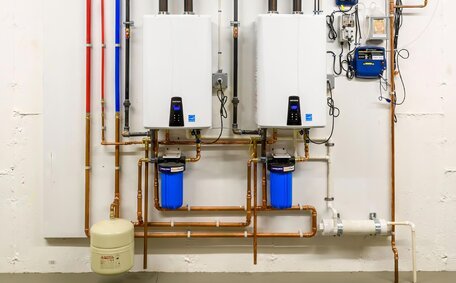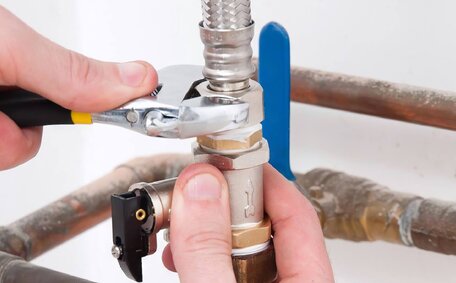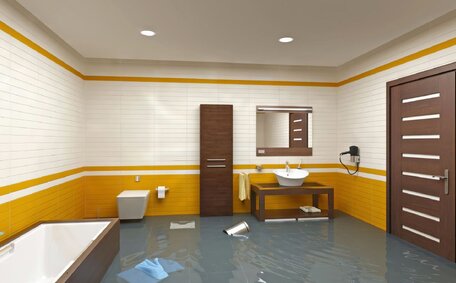Introduction: Tenant vs Landlord Drain Responsibilities
Identifying who’s responsible for clearing blocked drains in rental properties requires clarification. Blockages frequently result from misuse, such as when tenants pour fats down sinks or flush non-degradable items. Landlords generally address blocked pipes and structural repairs, but the scope of their duties can vary.
Tenancy agreements usually specify a tenant’s obligations for certain plumbing repairs, particularly those requiring urgent attention.
A plumber’s findings can determine who is at fault for the blockage, which then dictates who should rectify it.
This article examines unblocking duty divisions within a residential tenancy, ensuring fair trading practices preserve an equitable balance between tenant and landlord responsibilities. It outlines the best way to understand tenant and landlord responsibilities under the Australian Residential Tenancies Act. It aims to guide on managing common drainage blockages in rental properties.
Landlord Drain Maintenance Duties
Landlords are required to maintain their properties’ drainage systems and safety through necessary repairs and upkeep. This includes fixing leaking taps, regular pipe inspections, and clearing operations to prevent blockages, as well as addressing structural issues.
Typical landlord responsibilities for blocked drain maintenance duties include:
- Clearing tree root invasion in external drainage pipes
- Repairing damaged sewer drain lines underneath properties
- Unblocking sinks and other fixtures if blockages are within pipework walls
- Installing drain mesh screens, as recommended by Sydney Water, helps make sure in clearing blocked debris to prevent objects from going down your drain
- Verifying sewerage drain mains and wastewater pipes have correct gradient falls to prevent a potential sewer choke within property boundaries
- Landlords must also maintain drainage pits and manholes to ensure efficient wastewater flow.
Proactive plumbing maintenance minimizes the need for plumber interventions and swiftly resolves clogs to maintain facilities. Areas susceptible to fat or waste buildup may require more frequent maintenance, as a preventive measure for tenant convenience.
Landlords bear the repair costs if neglect leads to a blockage in the rental property’s sewer drains. However, tenants must avoid habits like pouring fats down sinks, as preventive measures against blocked sewer drains are part of a landlord’s responsibilities.
Tenant Misuse Causing Blockages
Tenants bear responsibility for not engaging in actions that lead to drain blockages. Such misuse includes disposing of fats, oils, and grease down sinks or flushing items like wet wipes, which may result in blocked toilets.
If tenant actions lead to blockages, they typically become responsible for the costs of clearing the drains. A plumber’s inspection often helps discover who is responsible and what caused the blockage, determining accountability.
Should a blockage occur due to actions like improper fat disposal, the tenant is liable for the drain rectification fees. To circumvent repair costs, tenants are advised to seek help promptly and:
- Refrain from pouring fats and oils down any drains
- Only flush toilet paper and human waste down toilets
- Place rubbish in bins rather than attempting to flush it
- Use sink strainers to catch food scraps and hair
Tenants can take preventive steps to avoid disputes regarding responsibility for blocked drains. Even in properly maintained properties, tenants have an obligation to vigilantly prevent issues like blocked toilets.
Negotiating Shared Drainage Costs
Considering shared costs between tenants and landlords can be a wise strategy when there’s uncertainty over who should fund repairs for a blocked drain. Open communication is crucial for clarifying accountability and prompt action between property owners and tenants regarding drain blockages.
Points to discuss, to identify the cause of blocked drains, include:
- Evidence from a plumber’s inspection on the likely cause
- Any recent plumbing repairs or issues on the property
- Who usually maintains drains and handles blockages
- Impact and severity of the blockage
- Consideration of whether property maintenance practices have been equitable
Reaching an agreement for one-off shared costs, typically determined by a licensed plumber, does not negate ongoing responsibilities detailed in the lease agreement. Negotiations should be recorded, ideally by amending the rental agreement’s responsibility clauses.
If tenant neglect is evidently the cause of issue, leading to blocked drains in your rental, the tenant would be liable for the full financial burden. Similarly, it is the landlord’s responsibility to fix wear and tear on plumbing fixtures, along with any structural and pipework defects that lead to blockages.
Seeking a drainage expert for assessments or legal advice can facilitate negotiations when responsibility is complex or disputed between parties.
Using Plumber Assessments to Prove Responsibility
Bringing in a professional, licenced plumber, sometimes in coordination with local council and utility regulations, can help definitively determine the cause of a drain blockage. Professional diagnostic testing and imaging can pinpoint whether blockages stem from pipe damage, tenant misuse, or other structural issues.
A camera inspection may reveal significant fat and oil residue accrued in your drains then might have been caused by improper tenant disposal. Or it could show invasive tree roots or broken piping that require landlord repairs. Such evidence can clarify when blockages are caused tenant actions and determine financial liability for unblocking and repairs.
The key benefit of professional drain assessments is eliminating speculation on blockage causes. Plumbers provide an unbiased third-party determination, preventing premature blame from either landlords on tenant behaviour or tenants on landlord neglect.
For precise evaluations of plumbing issues, like blocked drains, call Bella Vista Plumbing on 1300 349 338, and prompt action is recommended. Our licensed technicians meticulously conduct assessments to facilitate manageable repairs, providing tenants and landlords with evidence for advancing negotiations or repair work.
Avoiding Blockages and Maintaining Drains
Tenants can perform several actions to maintain drains diligently, pondering what need be done to circumvent blockages that might necessitate expensive repairs.
Regular Drain Cleaning
Tenants should regularly clean drains as a preventative measure against clogs. This involves flushing drains with a mix of hot water, baking soda, and vinegar to dissolve grease, hair, and soap scum.
Tenants should keep plugholes and drain covers clean by regularly removing hair and scrubbing away fatty residues.
Avoid Flushing Inappropriate Items
Refraining from flushing wet wipes down toilets, which should cater only for human waste and toilet paper, will aid in preventing clogs. Other common products, such as wet wipes, cotton buds, and feminine hygiene items do not break down and can get caught in pipes, leading to blockages.
Food scraps, cooking oil or grease should never be poured down the kitchen sink either. These should be disposed in the rubbish.
Use Drain Screens and Catchers
Installing drain screens or sink catchers is key, ensuring nothing too large for the drain can enter and potentially cause blockages. This also minimises the buildup down drain over time.
Always clear any catcher to avert clogging in your water system’s drainage paths. Mesh screens may also need removing and cleaning if significant debris accumulates.
Adopting simple maintenance routines can prevent conflicts and reduce the financial burdens associated with drain blockages for both landlord and tenant.
Conclusion: Working Together for Effective Drainage
In summary, maintaining clear and functioning drainage systems as a part of end lease obligations in a rental property relies on tenants and landlords understanding and upholding their responsibilities. While accountability may vary during tenancy for different blockage scenarios, open communication and impartial professional advice can guide effective solutions.
Tenants must practice vigilance to avoid contributing to clogs through actions such as improper disposal of fats. Landlords responsible maintaining drainage must inspect and clear pipes regularly to ensure they are in working order and identify issues before emergencies occur. By collaborating proactively, tenants and landlords can address blocked drains your residence may encounter, aiding in swift resolution or effective minimisation.
If you need clarification on how to unblock your drains, contact a reputable plumber like Bella Vista Plumbing on 1300 349 338. Our specialists can assess maintenance needs, guide negotiations, and provide reliable services for unblocking drains.
When the relations between landlords tenants are cooperative in maintaining drainage system integrity, rental properties can provide comfortable, usable facilities for all occupants. Understanding each party’s responsibilities is key to an effective landlord tenant relationship.






